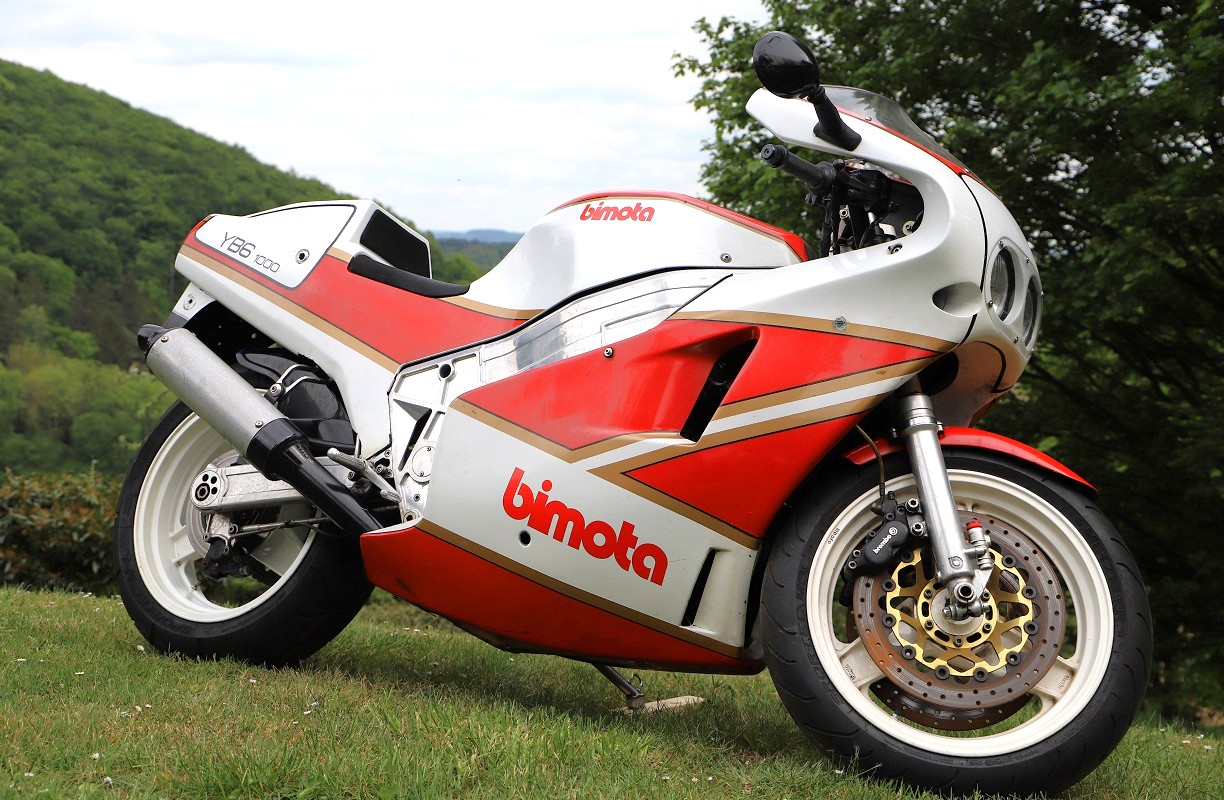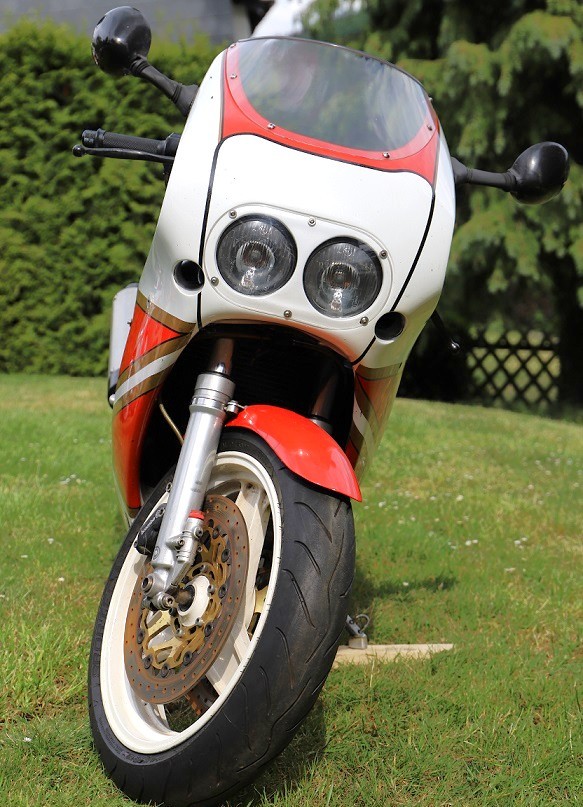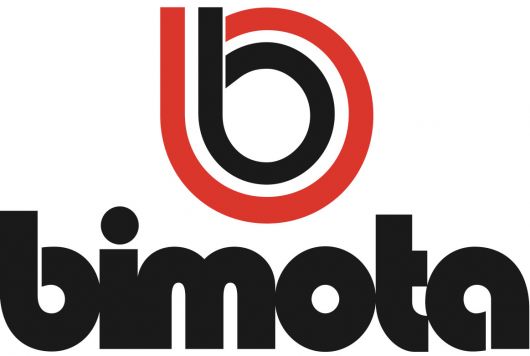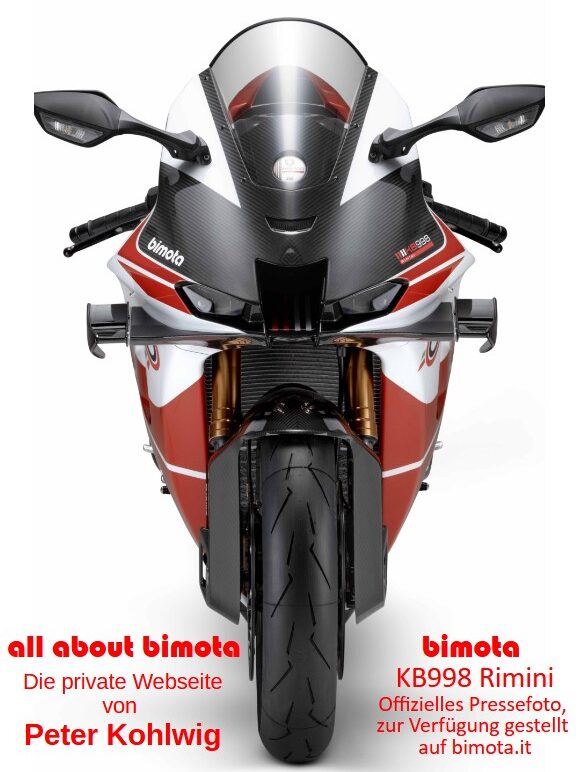
| Designer | Frederico Martini | First presentation | Tokio 1987 |
| Production period | 1988 – 1990 | Production numbers | 546 thereof 36 kits |
| Power | 102 KW (140 PS) | Displacement | 989 ccm |
| Topspeed | 260 km/h | Weight | wet 211 kg dry 195 kg |
| Price | 35.530 DM (1988) | Colours | red / white / gold |
| Technical basis | Yamaha FZR 1000 |
Parallel to the YB4, Bimota introduced the YB6, an almost identical model except for the engine, which was equipped with the 140 hp powerplant from the Yamaha FZR 1000.
The engine is integrated as a stressed member and therefore rigidly mounted in the lightweight 9.8 kg aluminum frame. Two smaller machined aluminum plates, bolted to the front of the frame, connect the frame to the cylinder head on each side. The larger machined aluminum plates, welded to the rear of the diagonal extruded profiles, form the rear engine mounts and the swingarm pivot. A crossmember support running behind the carburetors further reinforces the frame.
The suspension, provided by Marzocchi, features a 41.7 mm fork at the front with separate spring and damping functions in each leg (as seen on the DB1) and a rear monoshock with a separate reservoir. The shock is continuously adjustable for preload and has five levels of adjustment for both compression and rebound damping. The fork is equipped with an anti-dive system, and the spring preload can be adjusted in five steps. The rear ride height can be fine-tuned via the threaded rods in the shock linkage.
The YB4, which was also sold from 1988 onwards, was priced at nearly 40,000 DM as a replica of the 1987 world championship-winning bike, making it the most expensive production motorcycle in the world. In comparison, the YB6, with its larger engine, was relatively affordable at 35,530 DM. In issue 6 of 1988, Motorrad magazine commented on the price at the end of its test report with the words:
„You have to hand over 35,530 Marks to own a Bimota. That amount would buy you an enduro, a comfortable chopper for movie nights, and a supersport bike for the weekend, all with matching gear, from the Japanese manufacturers. You’d have three great motorcycles—but still no Bimota.“


